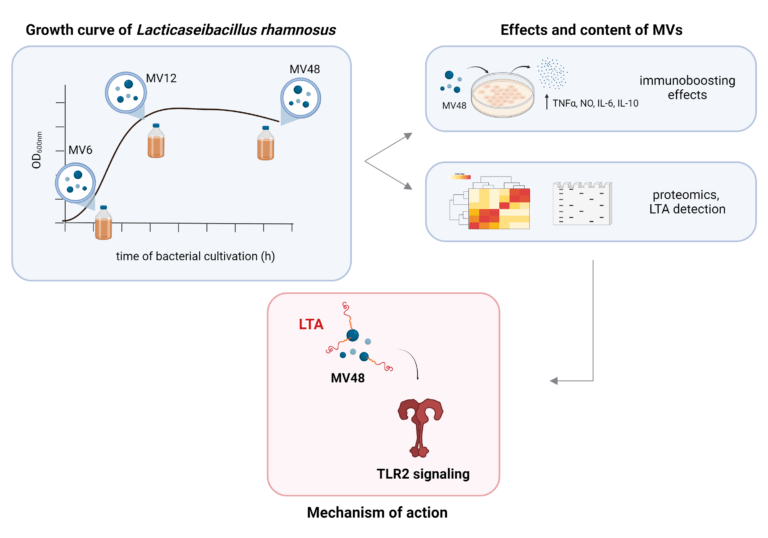New publication: Growth Phase Matters: Boosting immunity via Lacticasebacillus-derived membrane vesicles and their interactions with TLR2 pathways
The teams of Dr. Ambrožová and Dr. Turková have published a new paper.
This study examines the properties of membrane vesicles (MVs) produced by Lacticaseibacillus rhamnosus CCM7091 at different growth stages: early exponential (6 hours), late exponential (12 hours), and late stationary phase (48 hours). Significant differences in protein content were found between MVs from the early and late stages, with the late stationary phase MVs (MV48) showing the most potent immune-stimulating effects. MV48s were more readily taken up by epithelial cells and triggered a stronger immune response in murine macrophages, likely due to increased lipoteichoic acid (LTA) expression and enhanced TLR2 signaling. These findings suggest that MVs from the late stationary phase could be particularly effective for therapeutic applications as nanocarriers.
